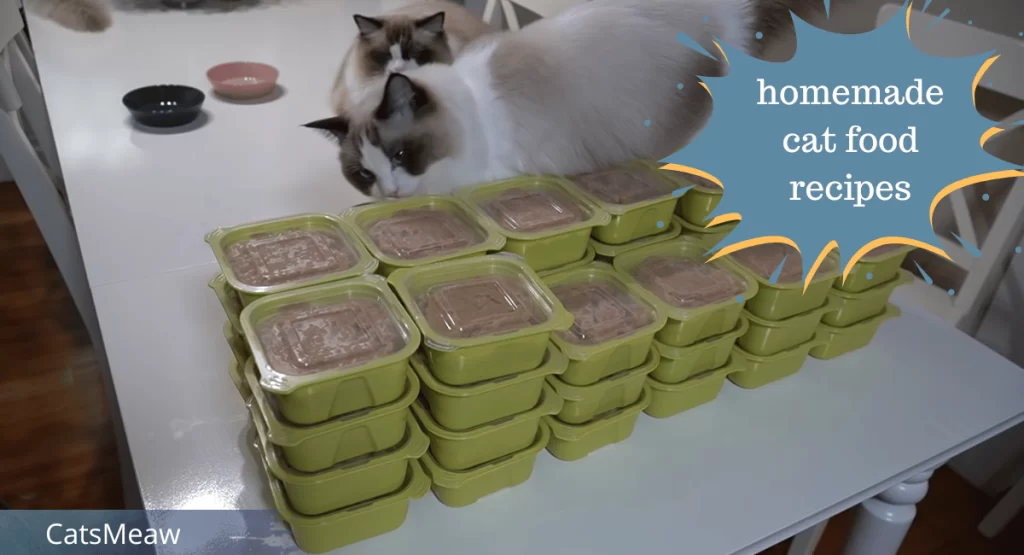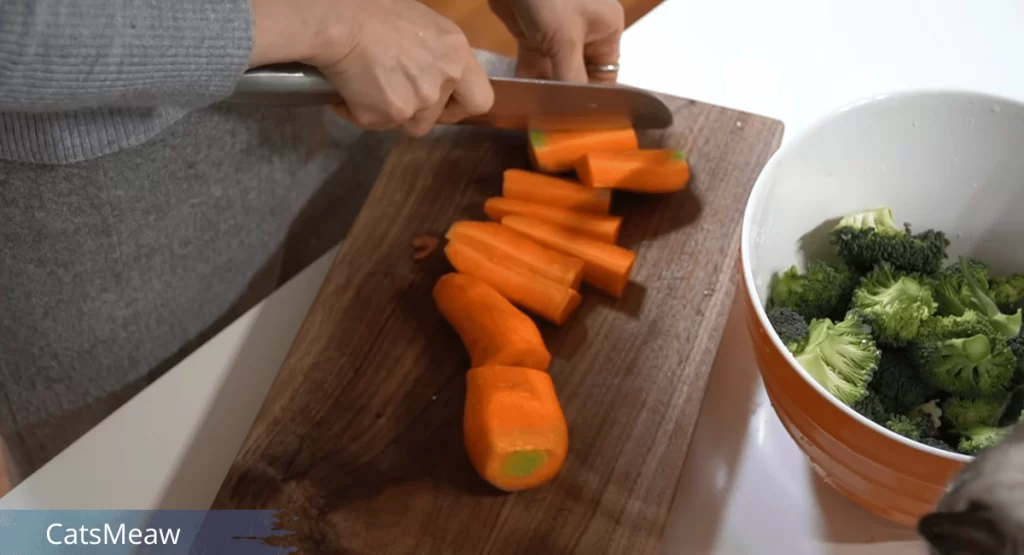If you are concerned about your cat’s health, then you want nothing but the best for your feline friend. And when it comes to their nutrition, healthy homemade cat food can be a great option. Not only does it allow you to have control over the ingredients, but it also ensures that your cat is getting a balanced and healthy diet.
In this article, we will explore the benefits of homemade cat food and provide you with three delicious and nutritious recipes that your cat will love.

Table of Contents
Why Healthy homemade cat food is Beneficial
Feeding your cat homemade food has several advantages over commercial cat food. Firstly, it gives you the opportunity to carefully select the ingredients that go into your cat’s meals. Commercial cat food often contains fillers and additives that may not be the best for your cat’s health. By making your own cat food, you can ensure that your cat is getting wholesome and natural ingredients.
Another benefit of healthy homemade cat food is that it allows you to tailor the diet to your cat’s specific needs. Just like humans, cats have individual dietary requirements. Some cats may have food allergies or sensitivities, and others may require a specific balance of nutrients. Homemade cat food allows you to address these unique needs and provide your cat with a personalized diet.
Our pick: The Best Interactive Toys for Cats Indoor
Lastly, preparing homemade cat food can be a bonding experience between you and your cat. Cats are naturally curious creatures, and involving them in the cooking process can be a fun and interactive activity. It also gives you the opportunity to monitor their eating habits and ensure that they are maintaining a healthy appetite.
Important Ingredients to Include in Homemade Cat Food
When preparing healthy homemade cat food, it’s important to include a variety of ingredients to ensure a balanced diet. Here are some key ingredients that you should consider including:
- Protein: Cats are carnivores animals, that is why they require a diet high in protein. Good sources of protein include lean meats like, turkey, chicken and beef. Fish such as tuna and salmon can also be included in moderation.
- Vegetables: While cats are primarily meat eaters, some vegetables can provide important nutrients. Vegetables like carrots, spinach, and pumpkin are rich in vitamins and minerals that can support your cat’s overall health.
- Grains: While it is not necessary to include grains in a cat’s diet, some cats may tolerate them well. If you choose to include grains, opt for whole grains like brown rice or quinoa.
- Supplements: To ensure that your cat is getting all the necessary nutrients, you may need to include cat supplements & vitamins. Omega-3 fatty acids, taurine, and vitamin E are some examples of supplements that can benefit your cat’s health.
By including a variety of these ingredients in your healthy homemade cat food recipes, you can provide your feline friend with a well-rounded and nutritionally balanced diet.
Recipe 1: Grain-Free Chicken and Vegetable Stew
Ingredients:
- 1 pound boneless, skinless chicken breast
- 1 cup carrots, diced
- 1 cup green beans, chopped
- 1/2 cup peas
- 2 cups chicken broth (low sodium)
- 1 tablespoon olive oil
Instructions:
- In a large pot, heat the olive oil over medium heat. Add the chicken breast and cook until browned on all sides.
- Remove the chicken from the large pot and put it aside. In the same pot, add the carrots, green beans, and peas. Cook for 5 minutes, stirring occasionally.
- Add the chicken broth to the pot and bring it to a boil. Reduce the heat and keep it for 15 minutes, or until the vegetables are tender.
- While the vegetables are cooking, shred the cooked chicken using a fork.
- Once the vegetables are tender, remove the pot from the heat and let it cool slightly. Using an immersion blender or a food processor, puree the vegetables until smooth.
- Add the shredded chicken to the large pot and stir to combine.
- Allow the stew to cool completely before serving it to your cat. put any leftovers in an container in the refrigerator.

Recipe 2: Salmon and Sweet Potato Patties
Ingredients:
- 1 can salmon (boneless and skinless)
- 1 cup sweet potato, cooked and mashed
- 1/2 cup oat flour
- 1 egg
Instructions:
- Preheat the oven to (175°C) 350°F while lining a baking sheet with parchment paper.
- In a large bowl, combine the salmon with mashed sweet potato, oat flour and egg. Mix until well combined.
- Form the mixture into petite patties and arrange them on the ready baking sheet.
- Bake for 20-25 minutes, or until the patties are firm and golden brown.
- Allow the patties to cool completely before serving them to your cat. Keep any remaining food in a sealed container in the fridge.
Related: Wet Food For Cats With Sensitive Stomachs
Recipe 3: Turkey and Pumpkin Meatballs
Ingredients:
- 1 pound ground turkey
- 1/2 cup canned pumpkin
- 1/4 cup oat bran
- 1 egg
Instructions:
- Heat the oven to 375°F (190°C) and cover a baking sheet with parchment paper.
- In a large bowl, combine the ground turkey, canned pumpkin, oat bran, and egg. Mix until well combined.
- Form the mixture into petite meatballs and arrange them on the lined baking sheet.
- Bake for 15-20 minutes, or until the meatballs are cooked through.
- Allow the meatballs to cool completely before serving them to your cat. Keep any remaining food in a tightly sealed container in the fridge.
Guidelines for Making and Preserving Homemade Cat Food Recipes
- It is advisable to seek advice from your veterinarian before altering your cat’s dietary regimen.
- Wash your hands and any utensils thoroughly before and after preparing homemade cat food to avoid contamination.
- Divide the healthy homemade cat food into individual portions and freeze them for easy storage. Only defrost the amount required for each meal.
- Keep track of the expiration dates of the ingredients you use in your homemade cat food recipes to ensure freshness and quality.
- Gradually introduce healthy homemade cat food to your cat’s diet to allow their digestive system to adjust.
Conclusion
Healthy homemade cat food recipes can be a wonderful way to provide your feline friend with a nutritious and delicious diet. By carefully selecting ingredients and preparing homemade meals, you can ensure that your cat is getting the best possible nutrition. Try out these three recipes and see how your cat enjoys them. Remember to consult with your veterinarian for guidance on your cat’s specific dietary needs. Here’s to happy and healthy cats
